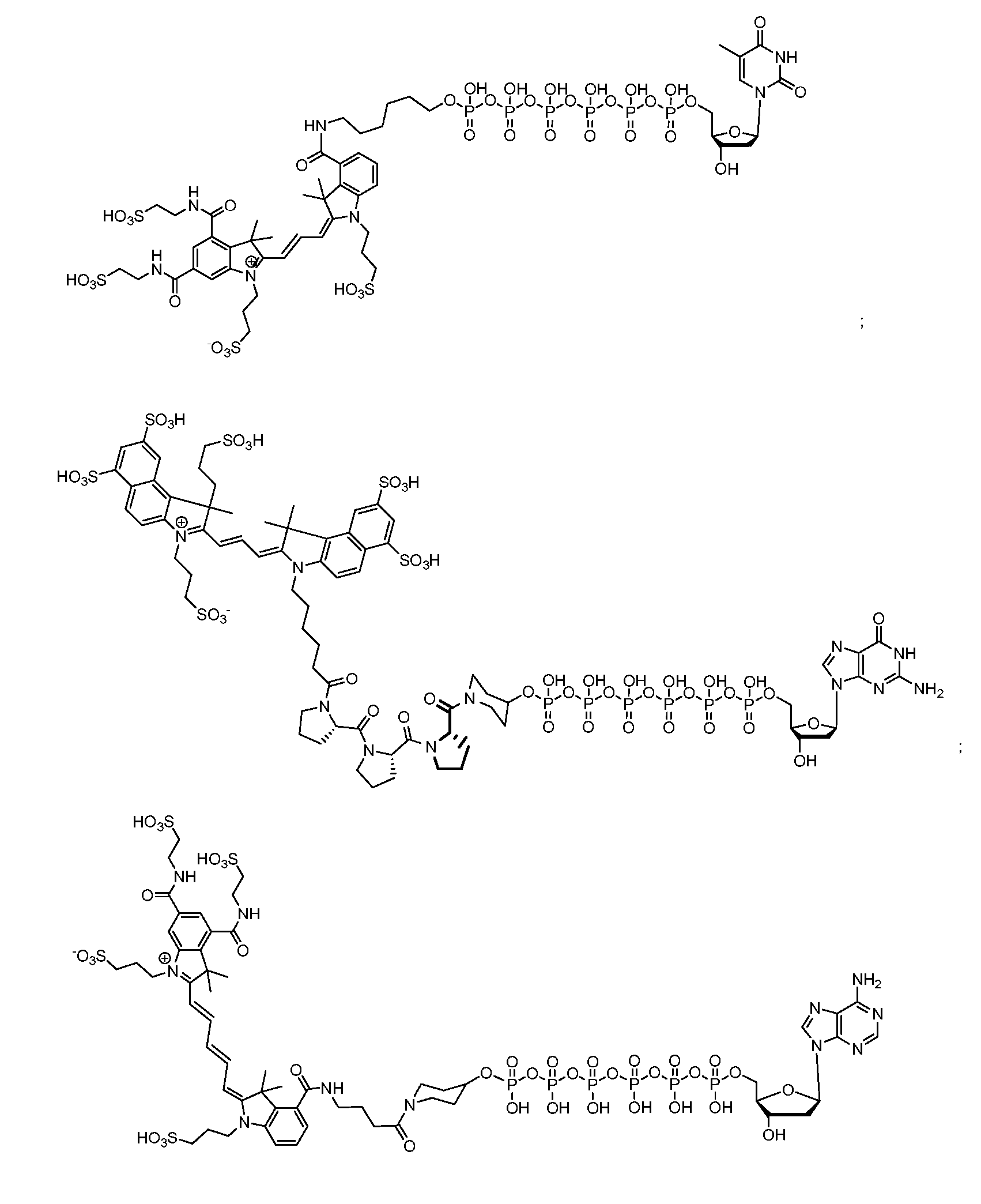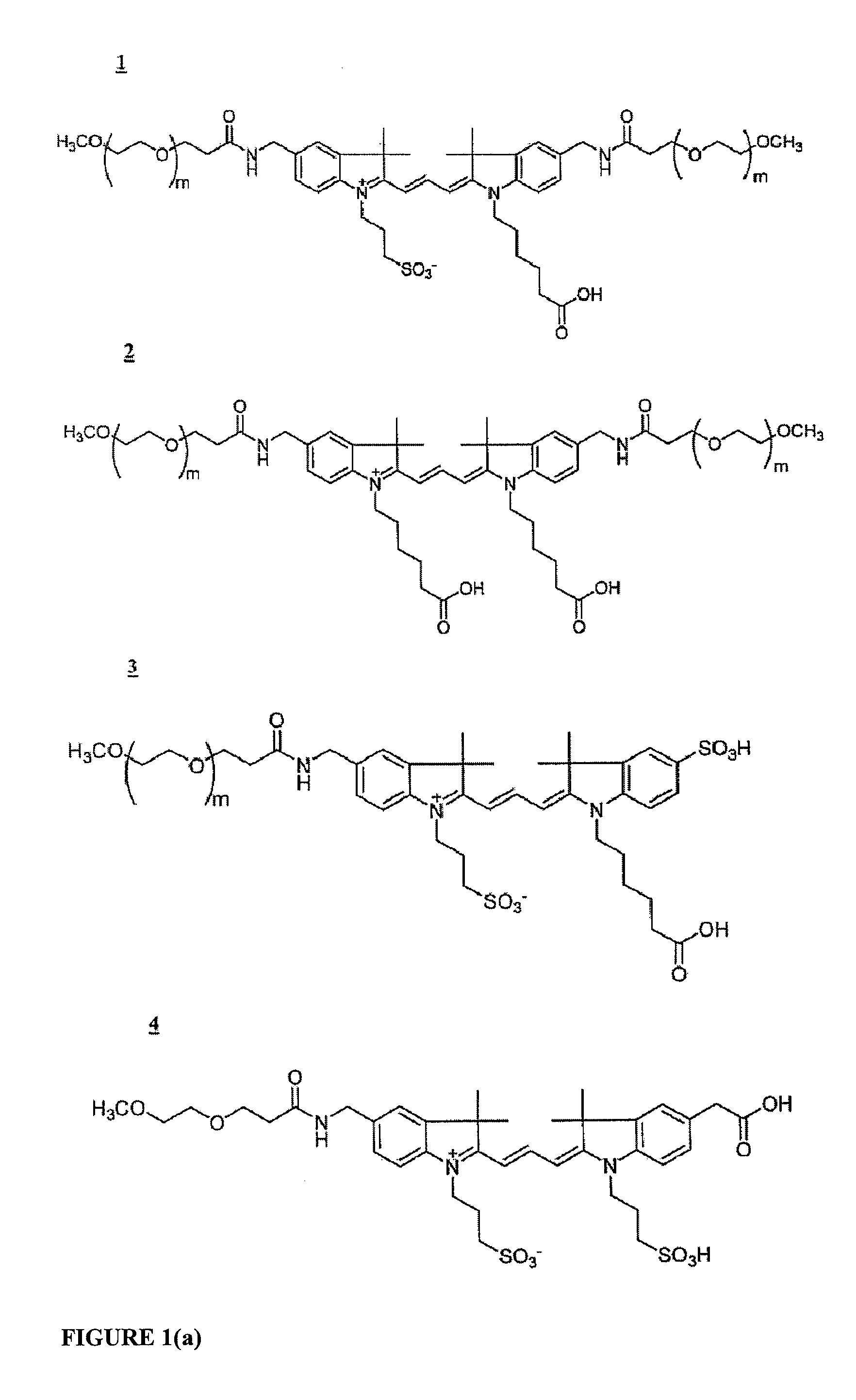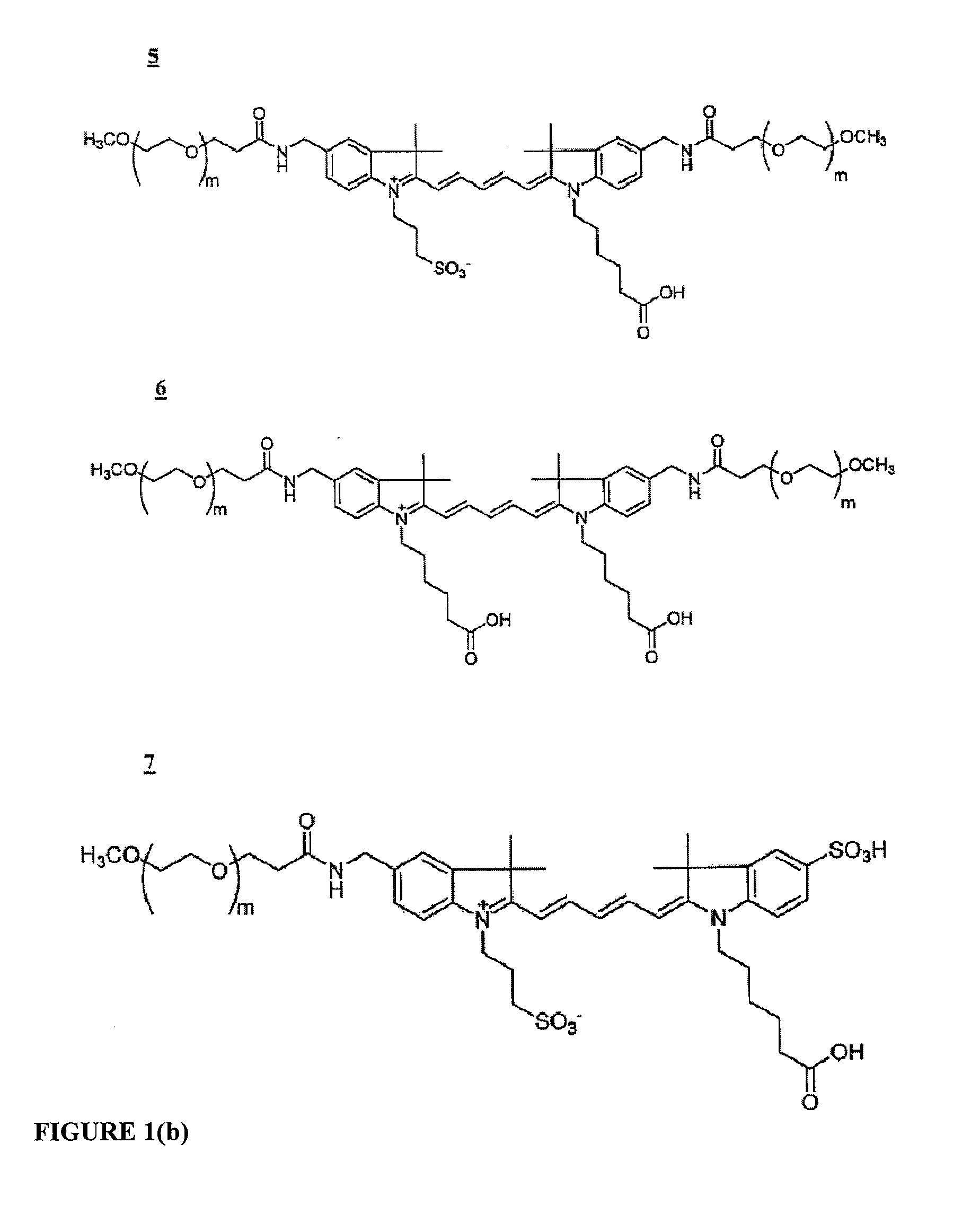Molecular Adaptors for Dye Conjugates
a technology of adaptors and dye conjugates, which is applied in the direction of instruments, peptides/protein ingredients, peptides, etc., can solve the problems of insufficient hydrophilicity of dyes, insufficient brightness, and inability to emit steady, so as to reduce blinking, aggregation and photobleaching, and enhance the hydrophilicity of dyes.
- Summary
- Abstract
- Description
- Claims
- Application Information
AI Technical Summary
Benefits of technology
Problems solved by technology
Method used
Image
Examples
example 1
[0185]
[0186]Synthesis of 2. A solution of 6-aminohexan-1-ol (1, 117.2 mg; 1 mmol) and N,N-diisopropylethylamine (523 μL; 3 mmol) in CH2Cl2 (15 mL) is made. p-Nitrobenzyloxycarbonyl chloride (259 mg; 1.2 mmol) is added to the stirred amino alcohol solution. Stirring continues for 4 hours at room temperature. The solution is then poured into a beaker with vigorously stirred ice cold 0.5 N NaOH (100 mL). After 15 minutes ethyl acetate is added (50 mL) and after stirring for a few more minutes, the contents transferred to a separatory funnel and the aqueous layer is discarded. The remaining ethyl acetate solution is washed twice more with 0.5 N NaOH (50 mL), followed by washes with 0.5 N HCl (3×50 mL), brine (1×50 mL), and water (2×50 mL). The resulting ethyl acetate phase is evaporated to dryness. After 12 hr. under high vacuum a quantitative mass yield for 75% HPLC pure product is obtained. The crude material is carried onto the next step without further purification.
[0187]Synthesis o...
PUM
| Property | Measurement | Unit |
|---|---|---|
| fluorescent | aaaaa | aaaaa |
| time | aaaaa | aaaaa |
| temperature | aaaaa | aaaaa |
Abstract
Description
Claims
Application Information
 Login to View More
Login to View More - R&D
- Intellectual Property
- Life Sciences
- Materials
- Tech Scout
- Unparalleled Data Quality
- Higher Quality Content
- 60% Fewer Hallucinations
Browse by: Latest US Patents, China's latest patents, Technical Efficacy Thesaurus, Application Domain, Technology Topic, Popular Technical Reports.
© 2025 PatSnap. All rights reserved.Legal|Privacy policy|Modern Slavery Act Transparency Statement|Sitemap|About US| Contact US: help@patsnap.com



